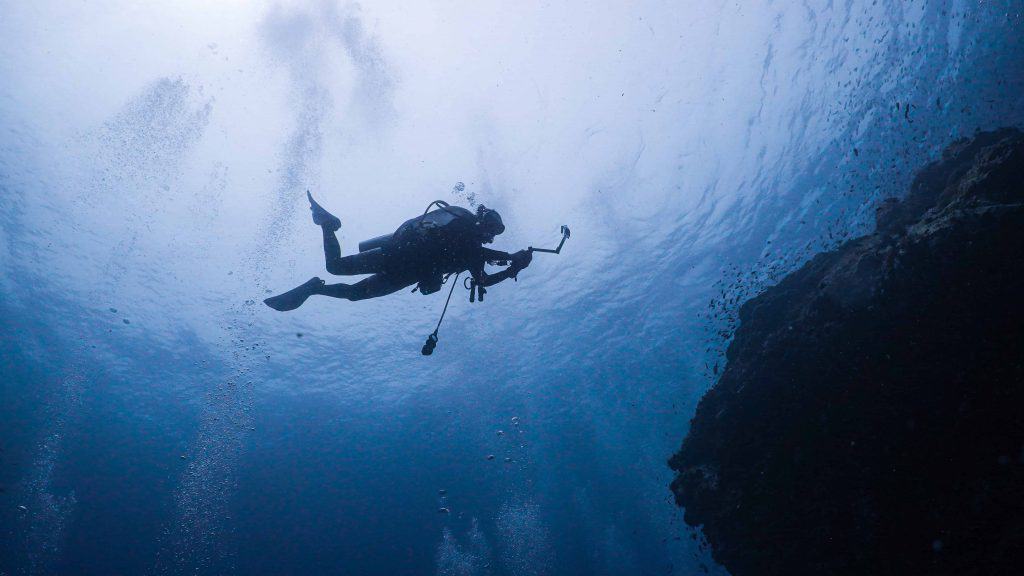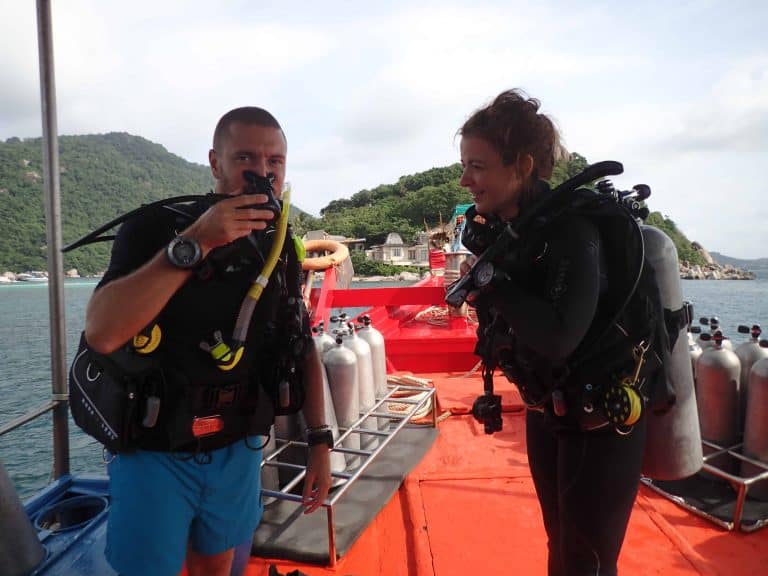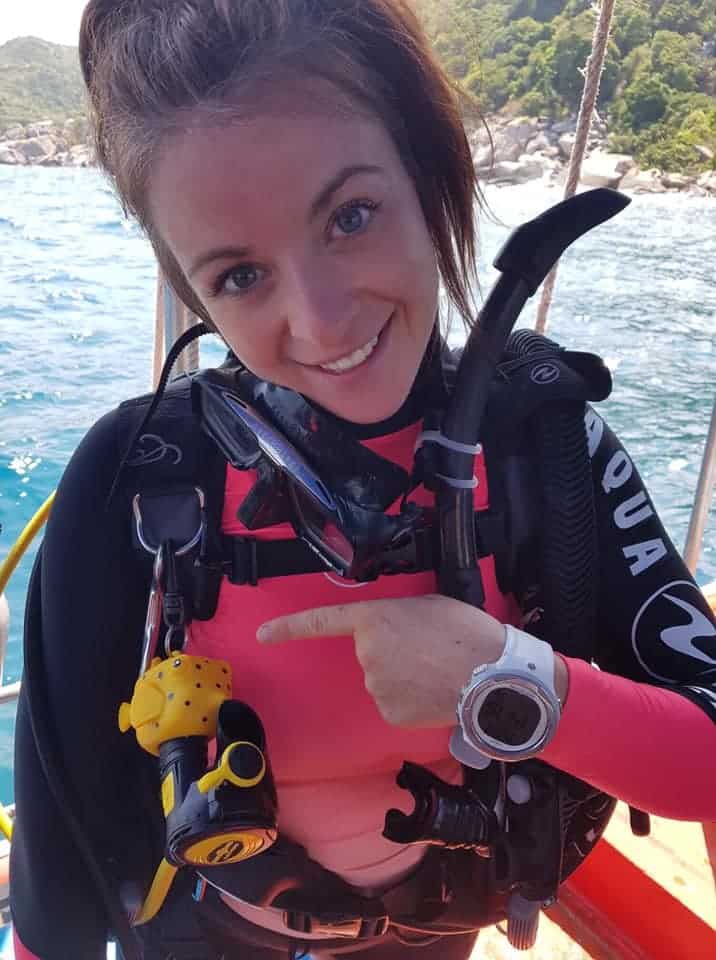When you put on any kind of wetsuit for the first time, it’s not always easy to know what to wear underneath. Do you actually need to wear anything underneath? Or, is it worth shopping around for accessories such as a full body rash guard?
In this guide, I’m going to be taking a look at everything you need to know about what to wear beneath your wetsuit. By the end, you should have a clearer idea of what to budget for, as well as what’s likely to work best for you! Don’t go into the water until you’ve read up on the following.
Table of Contents
What do you wear under a wetsuit?
What you wear under your wetsuit is entirely up to you, as you can choose beachwear, underwear or even rash guards.
What differs between divers the most, however, is why they wear clothing underneath their wetsuits. Many divers wear clothing that they can continue to swim in after they remove their diving clothes, for example.
Others, who might prefer to only go scuba diving, may wear something that’s comfortable enough to wear under a wetsuit in all conditions.
It all depends on what you like in terms of comfort. Your wetsuit should protect you completely when you’re deep in the water, meaning that there’s no real right or wrong answer.
The best thing to do before you consider adding the extra layer of a wetsuit on is whether or not you’re going to swim afterwards, or if you’d like to simply hit the beach. What might also influence what you wear beneath your wetsuit is the temperature of the water you go scuba diving in, and how deep you actually go into the water.
What CAN You Wear Under a Wetsuit?
You can wear neoprene shorts, a rash guard, a one piece swimsuit – even underwear – underneath your diving suit.
Providing it’s comfortable for you to wear under your wetsuit in all the diving and swimming you do, then who is anyone else to criticise your choice?
Let’s take a look at what divers might commonly wear underneath a suit when they approach the water.

Rash Guards
I’ve written up a few pieces on rash guards, which are similar to wetsuit designs in that they are made for diving, elsewhere on the site. For many divers, this extra layer is a real asset as soon as you get in the water, and many people won’t wear a wetsuit until they have a rash guard on.
There’s a few reasons why people like to wear a rash guard underneath a wet suit. Full body or otherwise, they can give you some extra warmth if you are diving and swimming in colder waters. Although the thickness of your wetsuit should be chosen dependent on the water temperature you will be entering.
If you are going to wear anything under your wetsuit, a rash guard is going to give you the best protection against any critters or creatures in the deep. Many guards and one piece suit options are made with anti-sting and anti-bite protection in place. This is particularly useful if you’re going to be in water near jellyfish. It will just offer you that bit of extra protection.
My personal reason for wearing a rash vest underneath my wetsuit is for ease of donning it on and off! It makes it so much easier to pull on a wetsuit over a layer and peel it off at the end of the dive. Most dive brands will have a range to choose from, but if it’s womens rash guards you are looking for, make sure you read my best ladies rash guard review!
Bathing Suit
If you’re keen to explore the water outside of your wetsuit, then a bathing suit or any kind of swimwear is likely to be a good choice. Many people will see this as an extra layer which can make things a bit stuffy beneath your wetsuit. However, what you like might not be the same as the next person!
A bathing suit is something you can easily wear under your wetsuit, meaning that when you are finished with scuba diving for the day, you can just climb out of the water and out of your wetsuit on the beach. This leaves you free to go swimming around to your heart’s content.
If you’d like to head straight back to change after wearing a wetsuit, there’s no need for a bathing suit, neoprene shorts or the like. It’s all a matter of preference. Just don’t strip off on the boat!
Wearing a suit under a wetsuit might actually give you a fair amount of freedom to move, too. Therefore, don’t immediately assume this is the worst choice to make.
Underwear
Yes, it’s perfectly reasonable to wear underwear beneath your wetsuit. Wetsuit wearers may choose to at least wear undergarments for the fact that they might feel a bit exposed otherwise.
Some divers and swimmers might simply prefer wearing underwear beneath a wetsuit to avoid chafing and irritation. Both are perfectly reasonable to understand.
However, you’re going to need to make sure your wetsuit is water tight – otherwise, anything you wear under your wetsuit is going to get absolutely drenched. There’s nothing worse than soaking underwear beneath a suit.
Nothing!
Believe it or not, some divers prefer to go commando and not wear anything under their wetsuit. This isn’t unheard of, and providing you’re comfortable, you can go right ahead and just suit up as you like.
However, choosing to not wear anything under a wetsuit isn’t a matter of pride or decency. It can actually be pretty annoying to deal with unless you are well prepared, or have plenty of wetsuit experience.
Getting into a wetsuit without any extra layers can cause serious chafing and rubbing. What’s more, getting out of a suit can be tricky. Not only because you are wearing nothing underneath, but because you may find yourself sticking on your way out. It’s therefore always a good idea to invest in a top wetsuit.
Plus, it is so much easier to warm up post dive if you remove your wetsuit. Obviously, you can’t do this if you are naked underneath.
And again, if you choose this option, make sure you don’t engage in the full monty in front of your buddies!
Why Do People Wear Clothing Under a Wetsuit?

Many divers choose to wear layers under a wetsuit for comfort and a small bit of thermal protection.
The fact is, there are no right or wrong answers. If you are just starting out diving for the first time, you can take your time and get used to what feels right, and what is easy to move around with.
Don’t feel you have to follow the pack. Here are a few quick points as to what might dictate what you choose to wear, and why.
Comfort
Going commando might seem easier, but it is not always comfortable. As mentioned, rubbing and chafing can be very annoying. Not only that, but wetsuits have a habit of bunching up and getting caught in extremely annoying places sometimes.
Therefore, wearing a swim suit underneath, or even a rash guard or just water friendly underwear, could help to make things more comfortable for you as you dive. The choice is yours.
Confidence
If you need to let some steam out of your wet suit, you might feel more confident if you have a rash guard or similar underneath. Many people simply don’t like going full exposure out of a suit, and unless you and the people around you are comfortable with you stripping off, it’s probably not the best idea.
Wearing a comfortable, practical and stylish layer underneath your wetsuit means you can easily get rid of the suit when you reach dry land without having to worry about your modesty. It is one additional thing that’s taken care of.
Ease of Movement
Sometimes, wearing just a wetsuit isn’t going to be the best choice if you want to move around freely. Therefore, it’s worth wearing something extra to give you that extra streamlining.
This is likely to differ from diver to diver, meaning it might be worth taking a look online and seeing if there are any options which appeal to you. You should also ask experienced divers for their opinions, too!
One of the best things you could do right away is just take a wet suit into the water and see how you get on. As I found, it’s often a case of fine tuning the experience as you go along. The more you dive, the more you’ll discover what might work for you, and what might not.
Warmth
Warmth is a big factor when diving. Much like on dry land, you can take layers off if you’re warm, but what do you do when you’re cold? You wrap up.
If you know that the waters you’re diving in are likely to be chilly or even colder, then a thick wetsuit and rash guard is an absolute must. There’s nothing likely to make you less comfortable during a dive that sub zero temperatures your body is unable to handle. It is all a matter of being safe, and if your wetsuit can’t give you the warmth you require, it’s time to buy a new one!
Make sure to take a look at my guides to rash guards for more information on what to look for. There are plenty of different types for men and women, with some which will protect you more against stings and spikes, and others which will maximise the thermal qualities. To learn more about this, make sure you check out my blog, do rash guards keep you warm?
Other Points to Remember
Wearing a wetsuit for the first time is always going to be a bit of an odd experience to begin with. However, I must recommend that you try out different layers as you start to explore dives and sites.
It’s worth taking into account reviews and what other divers have to say. However, it is more important, in my opinion, that you look for the best wetsuit for your needs in the first instance. This might mean a little bit of trial and error on your part, but do make sure to shop around carefully before you put any money behind a firm choice.
The right wetsuit for you is going to be one which you can freely move around in, and what’s more, it should be one that you can comfortably layer up if you need or want to. A wet suit is not made to be uncomfortable – it’s made to give you protection in the water, and as all divers’ needs are likely to be slightly different, it makes sense that they are always going to be very flexible.
Do you have any preferences as far as your own wetsuit is concerned? What do you choose to wear beneath your wetsuit when you go diving or swimming in the deep?
Be sure to leave a reply to my guide below, and let’s share a few ideas. Always remember that diving is a learning experience, and that goes for working out what you’re going to wear as much as where you’d like to dive! Wear something that’s comfortable and easy to get in and out of.

